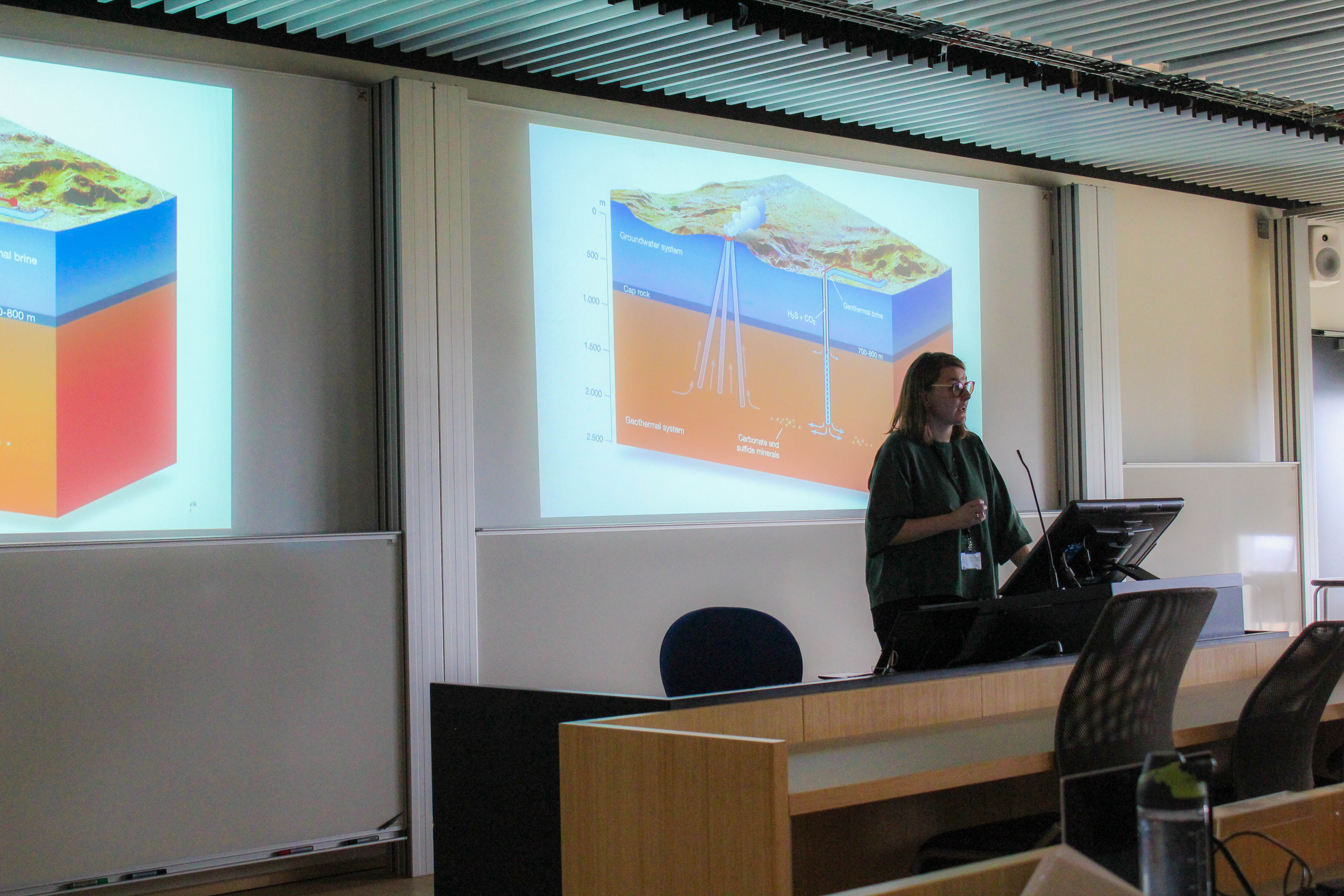Meet the Industry – October 2017
A first-hand perspective on the OR CarbFix project
 REYKJAVIK, October 26 - Continuing the highly anticipated MTI tradition, the new class of ISE graduate students launched the first Meet the Industry event of the season. For each MTI event, the class invites a representative from a sustainable organization in the energy sector to showcase their business and any special projects they may have on the go. For the Fall 2017 premiere event, ISE welcomed Sandra Ósk Snæbjörnsdóttir from Reykjavik Energy (Orkuveita Reykjavíkur, OR) to talk about their innovative CarbFix project. Sandra is geologist at Reykjavik Energy and was a part of the original team who developed and optimized the CarbFix procedure.
REYKJAVIK, October 26 - Continuing the highly anticipated MTI tradition, the new class of ISE graduate students launched the first Meet the Industry event of the season. For each MTI event, the class invites a representative from a sustainable organization in the energy sector to showcase their business and any special projects they may have on the go. For the Fall 2017 premiere event, ISE welcomed Sandra Ósk Snæbjörnsdóttir from Reykjavik Energy (Orkuveita Reykjavíkur, OR) to talk about their innovative CarbFix project. Sandra is geologist at Reykjavik Energy and was a part of the original team who developed and optimized the CarbFix procedure.
This year's MTI organizer, Ragna Björk Bragadóttir, explained why she contacted OR in particular:
After reviewing several companies, I decided to contact OR because they are operating the largest Geothermal Power Plant in Iceland, Hellisheiðarvirkjun. Once in contact, they asked me if there was a specific topic I wanted them to address. I looked at their website and landed on the CarbFix project. I thought that was a perfect topic, because CO2 emissions are one of the biggest issue the Earth is facing right now, so the idea of being able to pump it back into the ground is amazing.
CarbFix is a project founded to develop efficient methods and technologies for permanent CO2 storage in basaltic rock at Hellisheiði geothermal power plant in Iceland. This method is expected to help mitigate climate change and curb global warming to below the 2°C as stated in the Paris agreement. With CarbFix, CO2 charged water is reinjected to basaltic rock. The chemical reactions that occur between CO2 charged water and surrounding basalt result in the formation of carbonate minerals, locking the CO2 to the rocks. The typical carbon capture and storage method involves injecting supercritical CO2 to sedimentary basins or depleted oil and gas reservoirs. This often causes the injected CO2 to escape due to the difference in density between the supercritical CO2 and the surrounding liquid. With the CarbFix method, it has been demonstrated in 2016 that approximately 95% of the injected 250 tonnes of CO2 were permanently sequestered into calcite in 2 years.Part of this project's allure is that the CarbFix method can be applied anywhere a CO2 emission source is located near basalt formations and a water body.

A number of scientific papers about the CarbFix method have been published and are accessible by the public. Currently, the same method used to reinject CO2 will be used to sequester hydrogen sulfide gas, a toxic geothermal plant byproduct. Reykjavik Energy and its partners are now progressing to the second phase of the project, CarbFix2, which aims to move the CarbFix technology to a more general and economically viable technique that can be adopted throughout Europe and the whole world.
In general, the talk generated a lot of interest and excitement in ISE, and we look forward to the next MTI event.
